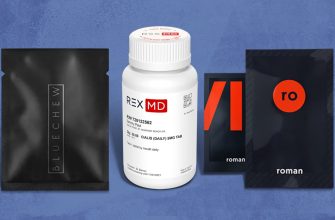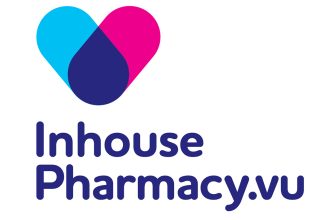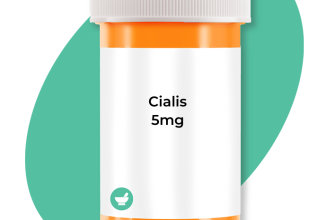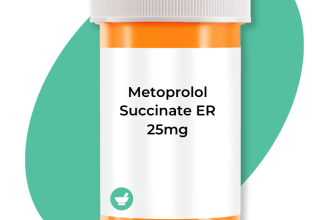Avoid online antibiotic purchases unless your doctor explicitly prescribes them and directs you to a reputable online pharmacy. This significantly reduces risks associated with counterfeit drugs and inappropriate medication use.
Always verify the online pharmacy’s legitimacy. Check for valid licenses and accreditation from relevant authorities. Look for secure payment gateways (HTTPS) and clear contact information. A lack of transparency should raise immediate concerns.
Understand that antibiotics require a prescription for a reason. Improper use contributes to antibiotic resistance, a serious global health threat. Self-treating can mask or worsen infections, potentially leading to severe health complications. Only a doctor can assess your condition accurately and prescribe the correct antibiotic.
If you need antibiotics, schedule an appointment with your doctor. They can diagnose your illness, determine the appropriate treatment, and provide safe options for obtaining necessary medication. Prioritizing your health means prioritizing professional medical advice.
Remember: Your health is paramount. Do not compromise it by taking risks with unregulated online pharmacies offering antibiotics without a prescription. A visit to your doctor is the safest and most effective way to address bacterial infections.
- Buying Antibiotics Online: A Comprehensive Guide
- Understanding Prescription Requirements
- Safe Alternatives for Online Healthcare
- Identifying Reputable Online Pharmacies (If a Prescription is Already Obtained)
- Legality and Risks of Online Antibiotic Purchases
- Counterfeit Drugs and Impurities
- Ineffective Treatment and Antibiotic Resistance
- Lack of Medical Supervision
- Data Privacy and Security Concerns
- Recommendation: Consult a Doctor
- Identifying Legitimate Online Pharmacies
- Verification and Accreditation
- Pharmacist Interaction and Communication
- Independent Review and Feedback
- Pricing and Payment
- Potential Side Effects and Drug Interactions
- Common Side Effects
- Drug Interactions
- Understanding Interactions
- Reporting Adverse Effects
- Disclaimer:
- Understanding Your Prescription and Dosage
- Understanding Dosage Instructions
- Medication Duration
- Alternatives to Online Antibiotic Purchases
- Seeking Professional Medical Advice
Buying Antibiotics Online: A Comprehensive Guide
Avoid buying antibiotics online without a prescription. This practice is illegal in most countries and carries significant health risks. Counterfeit drugs are common, potentially containing incorrect dosages or harmful ingredients. This could lead to treatment failure, antibiotic resistance, and severe health complications.
Understanding Prescription Requirements
Always consult a doctor before using antibiotics. A proper diagnosis is crucial to ensure you receive the correct antibiotic for your specific infection. Online pharmacies that offer antibiotics without a prescription often lack this necessary medical oversight. Your doctor can determine the appropriate antibiotic, dosage, and treatment duration, minimizing the risk of adverse effects and promoting successful treatment.
Safe Alternatives for Online Healthcare
Legitimate online telehealth platforms allow you to consult with licensed doctors remotely. These platforms can provide prescriptions for necessary medications, including antibiotics, if clinically appropriate. Always verify the platform’s legitimacy by checking for licensing information and patient reviews before using their services. Consider using only platforms that offer virtual consultations with licensed physicians in your region.
Identifying Reputable Online Pharmacies (If a Prescription is Already Obtained)
If you already have a prescription, verify that the online pharmacy is licensed and registered in your country. Check for accreditation from relevant regulatory bodies. Look for secure payment gateways (HTTPS) and a privacy policy that protects your personal information. A reputable pharmacy will clearly display contact details and provide easily accessible information about their return policy. Remember to compare prices and delivery times from different verified sources.
Legality and Risks of Online Antibiotic Purchases
Buying antibiotics online without a prescription is illegal in most countries. This includes the US, UK, Canada, and Australia. Penalties vary but can include fines and even imprisonment. Ignoring this law poses significant health risks.
Counterfeit Drugs and Impurities
Many online vendors sell counterfeit antibiotics. These fake drugs may contain the wrong dosage, inactive ingredients, or dangerous contaminants. Using them won’t treat your infection; it could cause severe allergic reactions or other harmful side effects. Reliable sources show a significant rise in counterfeit medications sold online, highlighting the danger.
Ineffective Treatment and Antibiotic Resistance
Incorrect antibiotic use, including taking the wrong medication or dosage, fuels antibiotic resistance. This global health crisis renders antibiotics ineffective against bacterial infections. Taking the wrong antibiotic can prolong your illness and make future infections harder to treat. The consequences of antibiotic resistance are severe and far-reaching.
Lack of Medical Supervision
A doctor assesses your condition and prescribes the appropriate antibiotic. Online purchases bypass this crucial step. You might not receive the right diagnosis or treatment, possibly worsening your health. Furthermore, online sellers can’t monitor your progress or provide necessary adjustments to your treatment plan. This lack of oversight increases the risk of complications.
Data Privacy and Security Concerns
Providing personal information to unregulated online pharmacies carries substantial risks. Your sensitive data might be misused or sold to third parties. Choose reputable sources to mitigate such risks. Always check a website’s security measures before sharing any personal details.
Recommendation: Consult a Doctor
Always consult a doctor before starting any antibiotic treatment. They can accurately diagnose your condition and prescribe the safest and most effective medication. Your health is paramount, and responsible antibiotic use protects both you and the community.
Identifying Legitimate Online Pharmacies
Check for verification and licensing. Look for a physical address and contact information readily available on the website. Legitimate pharmacies will proudly display their license information and accreditation details.
Verification and Accreditation
- Verify the pharmacy’s license with your state board of pharmacy or a similar regulatory body.
- Check if the pharmacy is accredited by organizations like the Verified Internet Pharmacy Practice Sites (VIPPS) program or the National Association of Boards of Pharmacy (NABP).
- Scrutinize the website’s security features. Look for HTTPS in the URL and a visible security seal.
Confirm the pharmacist’s credentials. A legitimate online pharmacy will have licensed pharmacists available to answer your questions and provide medication consultations. This interaction should not feel rushed or impersonal.
Pharmacist Interaction and Communication
- Contact the pharmacy directly via phone. Note the clarity and professionalism of the interaction.
- Look for an easily accessible FAQ section addressing common concerns about online ordering and prescription safety.
- Examine the website’s privacy policy. It should clearly outline how your personal information is protected.
Review customer testimonials and online reviews independently. Don’t rely solely on the pharmacy’s own testimonials. Use independent review sites to cross-reference.
Independent Review and Feedback
- Search for reviews on platforms like Trustpilot, Google Reviews, or other reputable review websites.
- Pay attention to both positive and negative feedback, looking for patterns or recurring complaints.
- Be wary of websites with overwhelmingly positive reviews, as they may be fabricated.
Pricing and Payment
Be cautious of unusually low prices. Extremely cheap medication could indicate counterfeit or substandard drugs. Secure payment options are crucial. Avoid pharmacies that only accept unusual or untraceable payment methods.
- Ensure the website utilizes secure payment gateways such as PayPal or Stripe.
- Look for a clear refund policy in case of issues with your order.
Potential Side Effects and Drug Interactions
Always consult your doctor before taking any antibiotic, especially those purchased online. Ignoring this advice can have serious consequences.
Common Side Effects
Antibiotics can cause a range of side effects, varying depending on the specific drug. Common reactions include nausea, diarrhea, and stomach upset. Less frequent, but still possible, are allergic reactions like skin rashes or hives, difficulty breathing, or swelling of the face, lips, tongue, or throat. Severe allergic reactions require immediate medical attention.
Drug Interactions
Many antibiotics interact negatively with other medications. For example, some antibiotics reduce the effectiveness of birth control pills. Others can interact with blood thinners, increasing the risk of bleeding. Certain antibiotics should not be taken with antacids or dairy products, reducing their absorption.
Understanding Interactions
| Medication Type | Potential Interaction with Antibiotics | Consequences |
|---|---|---|
| Birth Control Pills | Reduced effectiveness | Unintended pregnancy |
| Blood Thinners (e.g., Warfarin) | Increased bleeding risk | Bleeding complications |
| Antacids | Reduced antibiotic absorption | Ineffective treatment |
| Certain Antifungal Medications | Increased risk of liver damage | Liver failure |
Reporting Adverse Effects
If you experience any unusual symptoms while taking antibiotics purchased online, contact your doctor or pharmacist immediately. Report all side effects, even seemingly minor ones. Accurate reporting helps improve safety and effectiveness of future treatments.
Disclaimer:
This information is for general knowledge and does not constitute medical advice. Always seek professional medical guidance before starting any medication.
Understanding Your Prescription and Dosage
Always read your prescription carefully. Check the medication name matches the one your doctor prescribed. Verify the dosage is correct – the number of milligrams (mg) or other unit, and the frequency (e.g., twice daily). Misunderstanding this information could impact treatment.
Understanding Dosage Instructions
Your prescription details how much medicine to take and how often. For example, “Take 500mg twice daily” means you take 500 milligrams of the antibiotic twice each day, usually 12 hours apart. “Take one tablet every 12 hours” implies a similar schedule. Always follow the prescribed schedule precisely. Don’t adjust the dosage or frequency yourself. If you have any doubts, contact your doctor or pharmacist immediately for clarification.
Medication Duration
Your prescription will state the total course duration. Complete the full course, even if you feel better before you finish all your medication. Stopping early can lead to antibiotic resistance, making future infections harder to treat. Keep the remaining pills in a safe place until the course ends, as directed by your pharmacist.
Important Note: Never share your antibiotics with anyone else, even if they have similar symptoms. Antibiotics are specific to certain infections. Improper use can harm health and lead to antibiotic resistance.
Alternatives to Online Antibiotic Purchases
Visit your doctor. They can accurately diagnose your illness and prescribe the appropriate antibiotics, ensuring the correct dosage and treatment duration. This approach minimizes the risk of antibiotic resistance.
Seek care at a local clinic or urgent care facility. These provide quick access to medical professionals who can assess your condition and recommend suitable treatment options, potentially including antibiotics if necessary.
Consult a telehealth platform. Many reputable telehealth services offer virtual consultations with licensed doctors who can provide prescriptions if antibiotics are deemed appropriate. Verify provider licensing and credentials before using any such platform.
Explore alternative treatments. For some illnesses, antibiotics aren’t needed. Rest, hydration, and over-the-counter pain relievers can effectively manage many common ailments. Always consult a medical professional before starting any new treatment.
Remember, responsible antibiotic use is crucial. Misusing antibiotics contributes to antibiotic resistance, a serious public health threat. Prioritize professional medical advice to ensure safe and effective treatment.
Seeking Professional Medical Advice
Always consult a doctor or other qualified healthcare professional before taking any antibiotics, regardless of the source. This is paramount for accurate diagnosis and treatment.
- Describe your symptoms clearly and completely to your doctor. Include details like onset, duration, and severity.
- Provide a complete medical history, including any allergies or current medications.
- Be prepared to answer questions about your lifestyle and potential exposure to infectious agents.
Your doctor will perform a physical examination and may order tests, such as blood work or cultures, to confirm a diagnosis and identify the specific bacteria causing your infection. This allows for targeted antibiotic treatment, improving effectiveness and minimizing the risk of antibiotic resistance.
- Follow your doctor’s instructions carefully regarding dosage, frequency, and duration of antibiotic treatment.
- Never stop taking antibiotics prematurely, even if you feel better. This can lead to incomplete treatment and potential recurrence of the infection.
- Report any side effects to your doctor immediately. Antibiotics can have various side effects, some serious.
Seeking professional medical guidance ensures appropriate antibiotic use, protects your health, and contributes to responsible antimicrobial stewardship. Don’t hesitate; your health is worth it.










